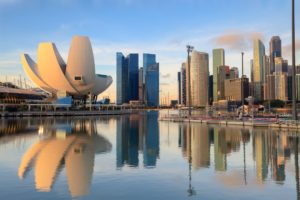ASEAN HEADLINE | MYANMAR: First Myanmar junta conscripts to begin duty at end of month
.
CAMBODIA: Imported perversion: Rise in child-exploitation content from Vietnam raises concern

Child-exploitation content and other forms of extreme pornography are now more available to Cambodians than ever, thanks mainly to the distribution from syndicates in Vietnam, causing concern about their impacts among Cambodian minors amid the rising cases of child sexual abuse in the country.
The last major headlines about child pornography in Cambodia occurred in 2018, when the US Embassy in Phnom Penh dismissed nearly three dozen employees after a Facebook group chat containing alleged child exploitation material was discovered.
Before that, child porn, locally defined as “pornographic material that visually depicts a minor engaged in sexually explicit conduct” and outlawed by the Kingdom’s legislation, had taken form as cheap video discs being sold secretly in the market. Occasionally, the public learns about arrests, typically of foreigners, involved in producing child porn.
…
MYANMAR: First Myanmar junta conscripts to begin duty at end of month
…
A military source confirmed that the junta will deploy 5,000 newly trained troops to serve in various commands around the country, but did not say what duties they will perform

A first batch of 5,000 conscripts called up by Myanmar’s junta will begin duty at the end of this month, military sources told Agence France-Presse on Monday, as the generals struggle to crush opposition to their coup.
The junta enforced a conscription law in February, three years after it seized power, and sparked a widespread armed uprising that has spread across swathes of the Southeast Asian country.
The law allows the military to summon all men aged 18-35 and women aged 18-27 to serve in the armed forces for at least two years.
“The first batch of recruits, who started in early April, will conclude training at the end of this month,” one military source said. The source said that upon graduation the 5,000 conscripts would be posted to “different military commands around the country to serve their duty”, without giving details on how they would serve.
He requested anonymity as he was not authorised to talk to the media.
Another military source who also requested anonymity said individual military commands would decide how to employ the recruits they received.
“It will be up to the commands they arrive at after their training,” he said.
Myanmar has 14 regional military commands across the country, from the Himalayan foothills in the north to the sprawling Ayeyarwady delta region bordering the Indian Ocean.
At least 10 of them are currently engaged in fighting established ethnic minority armed groups or newer “People’s Defence Forces” that have sprung up to resist the junta.
‘Challenges’
The military service law was authored by a previous junta in 2010 but was never brought into force.
The terms of service can be extended up to five years during a state of emergency—which the junta declared when it seized power.
Those ignoring a summons to serve can be jailed for the same period.
Thousands of young men and women have been trying to leave the country since the law was enforced.
Conscripts from the third batch of 5,000 recruits have already begun arriving at training centres, the first source said.
A junta spokesman previously said the military has the capacity to train 50,000 a year although about 13 million people will be eligible to be called up.
Last month, state media quoted the junta’s defence minister as saying the military had faced “challenges” in filling quotas.
Local media have reported cases of young men being pulled off the streets in Yangon and other cities and taken away to undergo military training.
The junta has denied the reports.
Myanmar has been in turmoil since the military coup in February 2021 toppled the government of Aung San Suu Kyi.
Since then, more than 5,200 people have been killed in the military crackdown on dissent, and more than 26,000 others arrested, according to a local monitoring group.
https://www.khmertimeskh.com/501511646/imported-perversion-rise-in-child-exploitation-content-from-vietnam-raises-concern/
SINGAPORE: Oil spill in Singapore: The day the sea turned black

More than 400 tonnes of oil spilt into Singapore waters after a dredging boat hit a bunker vessel on June 14. Here’s a look at the big cleanup, which has so far involved more than 700 people and could span months.
Singapore’s southern coastline turned black after a major oil spill caused by a dredging boat hitting a stationary cargo tanker at Pasir Panjang Terminal on June 14.
Oil slicks quickly spread to the waters near Labrador Nature Reserve, Sentosa, East Coast Park, the Southern Islands and Changi, despite the authorities swinging into action within 11 minutes of being alerted to the incident.
After a massive cleanup over days, the removal of bulk oil from the sea and beaches is nearly complete, the authorities said in an update on June 24.
Based on satellite and drone images, there has been no oil slick observed at East Coast and Changi since June 18. Most of the public beaches affected have had the bulk of oil-soaked sand cleared, except Sentosa’s Tanjong and Palawan beaches.
The authorities said they are moving to the next phase of the cleanup operation, which will focus on oil remnants trapped in areas such as coastal features, waterside infrastructure and rock bunds that are not easily accessible.

@[email protected]


 Memento Maxima Digital Marketing
Memento Maxima Digital Marketing






